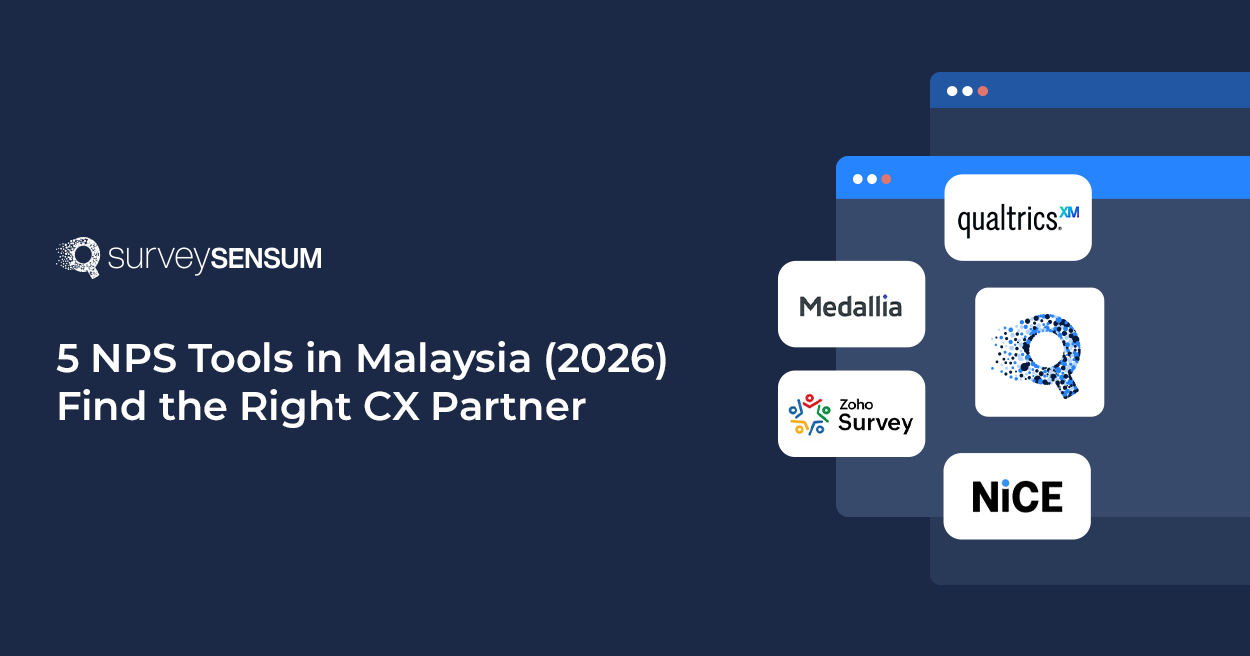

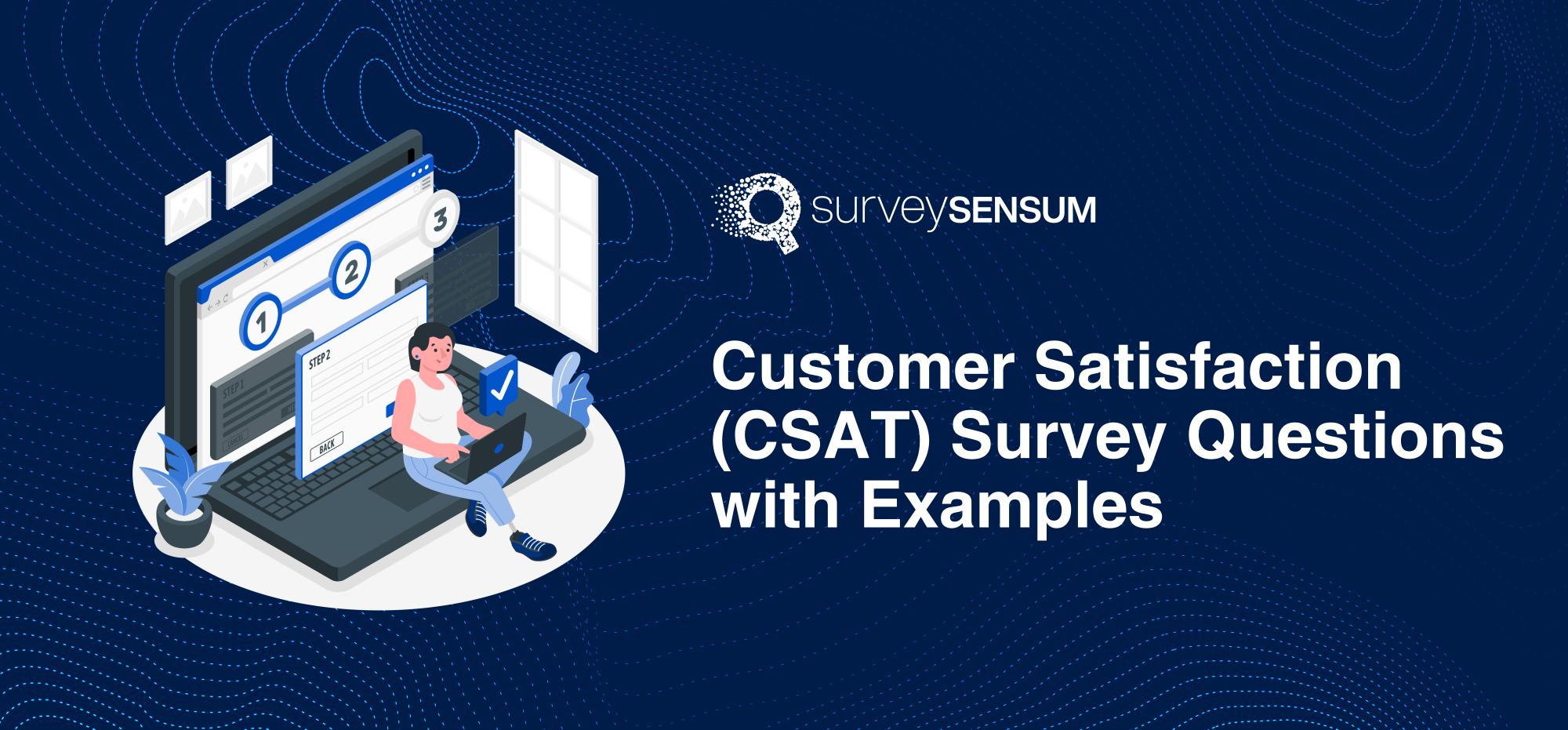
As a business owner or manager, you always strive to provide your customers with the best possible experience.
But how do you know if your customers are happy with your products and services?
The answer lies in CSAT software. But, have you ever wondered why only CSAT surveys and not other metrics? And what questions should you ask in these surveys?
In this blog, we’ll delve into why CSAT is the go-to CX metric for measuring customer satisfaction, as opposed to other metrics like NPS and CES, how to conduct them, and how to use the feedback you receive to improve your products and services.
So, let’s dive in and uncover the secrets to unlocking your customers’ satisfaction.
What is a Customer Satisfaction (CSAT) Survey?
Customer Satisfaction Surveys are used by businesses to measure the level of satisfaction customers have with their products, services, or overall experiences. CSAT surveys involve asking customers to rate their satisfaction on a scale or provide feedback about their experiences.
Doing this will give you a CSAT score which you can benchmark to know how you need to improve.

→ Know more about How to measure customer satisfaction effectively!
But, Why Should You Conduct CSAT Surveys?
Conducting a CSAT survey shows how customers view your business, their journey with your brand, and what aspects of your offering appeal the most to them. Here are some additional reasons in detail behind the importance of CSAT surveys:
- Retention and Profit Increase: Customers are likely to stay with you for a long time if they find their experience satisfactory and it’s extremely crucial as increasing customer retention rates by just 5% can increase profits by 25% to 95%.
- Positive Brand Value: CSAT plays a crucial role in shaping the value perception of a product or service. By measuring customers’ satisfaction with specific interactions or experiences, CSAT provides valuable feedback on how well a company meets customer expectations.
- Word-of-mouth and Brand Reputation: Satisfied customers are more likely to spread positive word-of-mouth recommendations and this is very important as 84% of all consumers trust these recommendations, making monitoring customer sentiment through CSAT surveys is vital for maintaining a positive brand image.
- Likelihood to Repurchase: High levels of customer satisfaction correlate strongly with loyalty, and likelihood to repurchase. And hear this- 86% of customers who have a great experience with a company are likely to repurchase from that company.
- Optimizing the Customer Journey: Mapping the customer journey is essential for understanding customer interactions with your brand and optimizing the customer lifecycle. CSAT surveys provide real-time insights into customer sentiment, helping you refine the customer journey for maximum effectiveness and customer satisfaction.
→ Know more about how to improve your customer satisfaction!
Experience the diverse advantages of CSAT using SurveySensum and kickstart your surveys right away!
Now comes the question — what type of questions should you ask in CSAT surveys, and on what scales?
Types of CSAT Questions on Different Scales
Knowing the right questions to ask in the CSAT surveys while measuring customer satisfaction can help you gauge exactly what you are looking for.
So, if you’re unsure about what questions to ask on which scale, the following section will help you out.
1. Likert Scale Questions
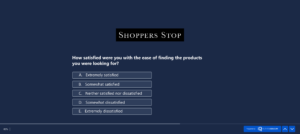
Likert scale CSAT (Customer Satisfaction) question is a survey question that asks customers to rate their level of agreement or disagreement with a statement. The Likert scale typically consists of a range of five to seven response options, with each option representing a different degree of agreement or disagreement. Customers are asked to select the option that best reflects their opinion or experience. The responses are then used to calculate an overall satisfaction score.
→ Know more about How to Calculate CSAT Score efficiently!
Why should you use it?
- They measure attitudes and opinions quantitatively.
- They are standardized and can be used across industries, making comparisons easy.
- They are versatile and can measure a wide range of attitudes and opinions.
- They are customizable, allowing for greater flexibility in measuring customer satisfaction.
- They provide actionable insights for improving customer satisfaction.
When should you use it?
1. Post-purchase experience
- Measure their satisfaction with the product or service they received
2. Customer support interactions
- Measure their satisfaction with the support they received
3. Website or app experience
- Measure customer satisfaction with the website or app’s usability, design, and features.
4. Product or service usage
- Measure customer satisfaction with specific features or attributes.
5. Overall brand perception
- Measure overall brand perception and loyalty, helping you to identify areas for improvement and increase customer retention.
Examples of Likert Scale CSAT Questions
Retail:
- How satisfied were you with the ease of finding the products you were looking for?
- How satisfied were you with the quality of the products you purchased?
- How satisfied were you with the overall shopping experience?
- How satisfied were you with the friendliness of the store associates?
- How satisfied were you with the speed of checkout?
Insurance:
- How satisfied were you with the clarity of the policy information provided?
- How satisfied were you with the responsiveness of customer service representatives?
- How satisfied were you with the value of the coverage provided for the price paid?
- How satisfied were you with the ease of filing a claim?
- How satisfied were you with the speed of claim processing?
Fintech:
- How satisfied were you with the ease of using our mobile app or online platform?
- How satisfied were you with the speed of our transaction processing?
- How satisfied were you with the clarity of our fees and charges?
- How satisfied were you with the security features provided for your account?
- How satisfied were you with the level of customer support provided?
2. Multiple-Choice Grid Questions
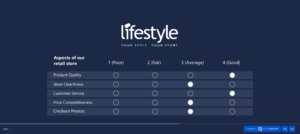
Multiple-choice grid CSAT questions are a type of survey question that presents respondents with a series of statements or attributes and asks them to rate their level of satisfaction or agreement using a scale.
The scale is typically a range of options, such as “strongly agree,” “somewhat agree,” “neither agree nor disagree,” “somewhat disagree,” and “strongly disagree.”
The questions are presented in a grid format, with the statements or attributes listed along the left-hand column and the rating options listed across the top. This format allows for the efficient collection of data and easy comparison of satisfaction levels across different statements or attributes.
Why should you use it?
- Allows you to collect data on multiple attributes or statements using a single question, saving time and effort.
- Allows for easy comparison of satisfaction levels across different attributes or statements, making it easy to identify areas of strength and weakness.
- Allows for consistent measurement of satisfaction levels across different products or services, making it easier to compare results and track changes over time.
- It can be customized to fit specific survey needs, allowing you to target the most relevant attributes or statements for your customers.
- Data collected through multiple-choice grid questions can provide clear insights into specific areas where improvements can be made, allowing you to take actionable steps to improve customer satisfaction.
When should you use it?
- After a purchase
- During customer service interaction
- After a product or service experience.
- When collecting feedback on specific features or aspects of a product or service.
Examples of Multiple-Choice Grid CSAT Questions
Retail:
On a scale of 1 to 5, please rate your experience with the following aspects of our retail store:
| Aspects of our Retail Store | 1 (Poor) | 2 (Fair) | 3 (Average) | 4 (Good) | 5 (Excellent) |
| Product Quality | |||||
| Store Cleanliness | |||||
| Customer Service | |||||
| Price Competitiveness | |||||
| Checkout Process |
Insurance:
Please rate your level of satisfaction with the following aspects of our insurance services:
| Very Satisfied | Satisfied | Neutral | Dissatisfied | Very Dissatisfied | |
| Policy Coverage | |||||
| Claims Process | |||||
| Customer Service | |||||
| Premiums and Pricing | |||||
| Communication |
Fintech:
Please rate your level of satisfaction with the following features of our online banking platform:
| Feature | Very Satisfied | Satisfied | Neutral | Unsatisfied | Very Unsatisfied |
| Ease of Use | |||||
| Account Security | |||||
| Transaction Speed | |||||
| Mobile App Functionality | |||||
| Customer Support Responsiveness |
Please choose the appropriate rating for each feature on a scale from very satisfied to very unsatisfied.
→ Know what goes behind creating an effective customer satisfaction survey design!
Reap the benefits of launching surveys with engaging questions and driving responses for intuitive decision-making!
3. Binary Scale Questions
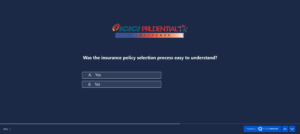
Binary scale CSAT questions are a type of survey question that asks customers to rate their level of satisfaction with a product or service on a scale with only two options: “yes” or “no,” “satisfied” or “not satisfied,” or “would recommend” or “would not recommend.”
Why should you use it?
- Simple and easy to answer, making them ideal for quick surveys
- Provide a standardized measurement tool that can be used across different industries
- Offer clarity and straightforward responses for understanding customer satisfaction levels
- Provide actionable insights for improving products or services
When should you use it?
- After a purchase or transaction
- After customer support interactions or ticket resolutions
- After a service or repair has been completed
- After a product demo or trial period
- After a customer has used a product or service for a certain period of time
Examples of Binary Scale CSAT Questions
Retail:
- Did you find what you were looking for during your visit? Yes/No
- Was our staff helpful and friendly? Yes/No
- Did our staff assist you in a timely manner during your visit to our store? Yes/No
- Did you find our store layout and signage easy to navigate? Yes/No
- Was the checkout process quick and efficient? Yes/No
Insurance:
- Was the insurance policy selection process easy to understand? Yes/No
- Did our staff respond to your queries and concerns in a timely manner? Yes/No
- Were you satisfied with the clarity of policy terms and conditions? Yes/No
- Did you feel that the premium charged was reasonable for the coverage provided? Yes/No
- Were you able to easily access your policy information online? Yes/No
Fintech:
- Was it easy to use our app or website? Yes/No
- Did you feel secure using our platform to manage your finances? Yes/No
- Did our customer support team resolve your issue in a timely manner? Yes/No
- Were you able to find the information you needed on our website or app easily? Yes/No
- Did you experience any technical difficulties while using our website or app? Yes/No
- Was the transaction process quick and efficient? Yes/No
Streamline your customer satisfaction measurement with SurveySensum’s Binary Scale CSAT questions! Sign up today
4. Rating Scale Questions
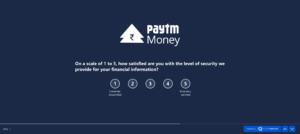
Rating scale CSAT questions are a type of survey question that asks customers to rate their level of satisfaction with a product or service using a numerical rating scale.
The rating scale typically ranges from 1 to 10, with 1 being the lowest level of satisfaction and 10 being the highest level of satisfaction.
Why should you use it?
- Provide detailed feedback for understanding specific areas of improvement
- Offer more granularity and precision in measuring customer satisfaction levels
- Help identify areas for improvement that may not be immediately apparent
- Allow for comparison of satisfaction levels across different products, services, and customer segments
- Results of rating scale questions can be used for predictive insights into future customer behavior and identifying potential areas of growth or risk
When should you use it?
1. Pre-purchase:
- Ease of finding information about your product or service
- Responsiveness of your customer support team
- Overall impression of your website or marketing materials.
2. Purchase:
- Ease of the checkout process
- Accuracy of the order
- Availability of payment options.
3. Post-purchase:
- Speed and accuracy of delivery
- Quality of the product or service
- Responsiveness of the customer support team.
4. Ongoing customer experience:
- Quality and relevance of your communications
- Ease of accessing your products or services
- Level of personalization and customization you offer.
Examples of Rating Scale CSAT Questions
Retail:
- On a scale of 1 to 5, how satisfied are you with your recent shopping experience?
- Did our staff meet your expectations in terms of helpfulness and friendliness? Please rate on a scale of 1 to 5.
- On a scale of 1-5, how would you rate the quality of the products you purchased from our store?
- On a scale of 1-5, how satisfied are you with the availability of products in our store?
- On a scale of 1-5, how satisfied are you with the checkout process at our store?
Insurance:
- On a scale of 1-5, how satisfied are you with the insurance policy selection process?
- On a scale of 1-5, how satisfied are you with the clarity of policy terms and conditions?
- On a scale of 1-5, how satisfied are you with the responsiveness of our customer support team?
- On a scale of 1-5, how satisfied are you with the claim settlement process?
- On a scale of 1-5, how satisfied are you with the convenience of accessing your policy information?
Fintech:
- How easy was it to use our app or website? Please rate on a scale of 1 to 5.
- On a scale of 1 to 5, how satisfied are you with the level of security we provide for your financial information?
- Did our customer support team resolve your issue in a timely manner? Please rate on a scale of 1 to 5.
- On a scale of 1-10, how satisfied are you with the speed of transaction processing?
- On a scale of 1-10, how satisfied are you with the convenience of accessing your account information on our website or app?
→ Read more about the different types of Customer Satisfaction Surveys!
5. Semantic Differential Scale Questions
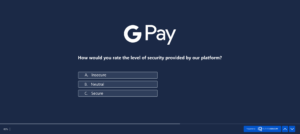
Semantic differential scale CSAT questions are a type of survey question that asks respondents to rate their satisfaction on a scale of opposite adjectives or descriptors.
The scale typically ranges from two to seven points and may include adjectives such as good/bad, fast/slow, pleasant/unpleasant, and satisfied/dissatisfied.
Why should you use it?
- Provide more nuanced feedback by rating satisfaction along a range of attributes or dimensions.
- Help identify specific attributes or dimensions driving customer satisfaction or dissatisfaction.
- Allow for comparative analysis between different products, services, and customer segments.
- The results of semantic differential questions can be used for predictive insights into future customer behavior and identifying potential areas of growth or risk.
When should you use it?
1. Post-purchase evaluation
- Quality of the product
- Speed of delivery
- Overall shopping experience
2. Customer service interactions
- Clarity of the information provided
- Friendliness of the representative
- Overall satisfaction with the interaction
3. Website and app usage
- Ease of use of a website or app
- Speed of loading pages
- Overall satisfaction with the platform
4. Product feedback
- Quality of the packaging
- Durability of the product
- Ease of use
5. Post-event evaluation
- Quality of the presentations
- Organization of the event
- Overall satisfaction with the experience
Examples of Semantic Scale CSAT Questions
Retail:
- Please rate your shopping experience with us on the following dimensions: Unpleasant/Neutral/Pleasant
- How would you rate the quality of the products you purchased from us? Poor/Neutral/Excellent
- How would you rate the cleanliness of our store? Dirty/Neutral/Clean
- How would you rate the level of customer service you received during your visit to our store? Poor/Neutral/Excellent
- How would you rate the speed of the checkout process at our store? Poor/Neutral/Excellent
Insurance:
- Please rate your level of satisfaction with our claims process on the following dimensions: Frustrating/Neutral/Satisfying
- How would you rate the clarity of the information provided by our insurance agent? Confusing/Neutral/Clear
- How would you rate the value of the coverage provided by our insurance policies? Poor/Neutral/Excellent
- How would you rate the speed of claim processing by our insurance company? Very Fast/Fast/Neither Fast nor Slow/Slow/Very Slow
- On a scale of responsive to unresponsive, how would you rate the responsiveness of our customer support team?” Very Responsive/Responsive/Somewhat Responsive/Somewhat Unresponsive/Unresponsive
Fintech:
- Please rate the ease of use of our app/website on the following dimensions: Difficult/Neutral/Easy
- How would you rate the level of security provided by our platform? Insecure/Neutral/Secure
- Please rate your level of satisfaction with the speed of our customer support on the following dimensions: Slow/Neutral/Fast
- How would you rate the accuracy of the financial information provided by our platform? Very Accurate/Accurate/Somewhat Accurate/Somewhat Inaccurate/Inaccurate
- How would you rate the convenience of our payment options? Difficult/Neutral/Easy
While there are plenty of ways in which you can use a CSAT survey, you must not forget to add an open-ended question.
Enhance your customer satisfaction insights with SurveySensum’s Semantic Differential Scale CSAT questions!
6. Open-Ended Questions
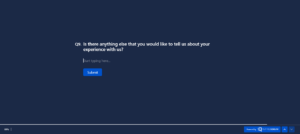
Open-ended questions actually open the doors for you to dive into customers’ expectations and experiences.
Why should you use it?
Asking open-ended Customer Satisfaction (CSAT) questions can provide valuable insights and feedback from your customers that you might not get from closed-ended questions.
- Allows customers to express their thoughts and feelings
- Uncovers issues you may not have considered
- Provides richer feedback
- Builds rapport with customers
→ Read more about the strategic impact of the journey-based csat survey!
When should you use it?
Launch open-ended questions when you want to gather thorough customer feedback, as these questions do not limit the respondents to answering their hearts.
Examples of Open-Ended CSAT Questions
- What could we have done better to make your experience happy?
- Tell us what you like the most in today’s transaction.
- What’s the best thing about working with us [company name] for you and why?
- What can our customer support team do better?
- Why did you choose us [company name or product] over our competitors?
- Are there any particular features or functionalities that you feel are missing from our products/services?
- What challenges or goals were you hoping to address through our product use?
The given questions can be customized in multiple ways as per your industry.
Now that you’re familiar with various types of customer satisfaction surveys, why delay? Utilize them all within 5 minutes using SurveySensum!
Now let’s see how you can create CSAT surveys in just 3 steps with SurveySensum.
Create a CSAT survey with SurveySensum
STEP 1: Log in to the SurveySensum platform.
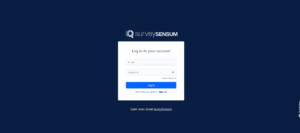
STEP 2: Click on Create a survey, and select the CSAT survey template.
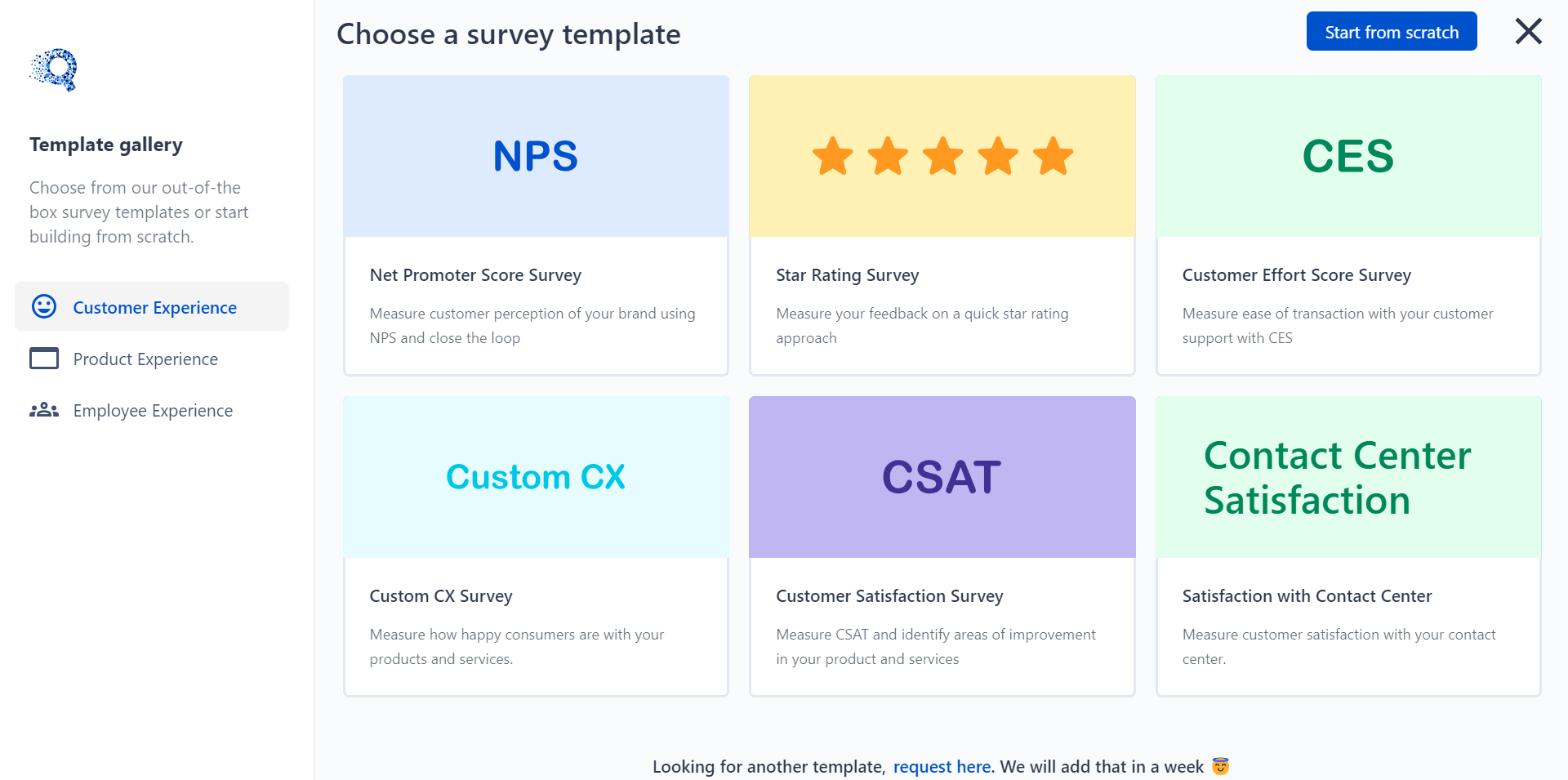
STEP 3: Personalize the survey as per your brand requirements, and once done, click on Share Survey.
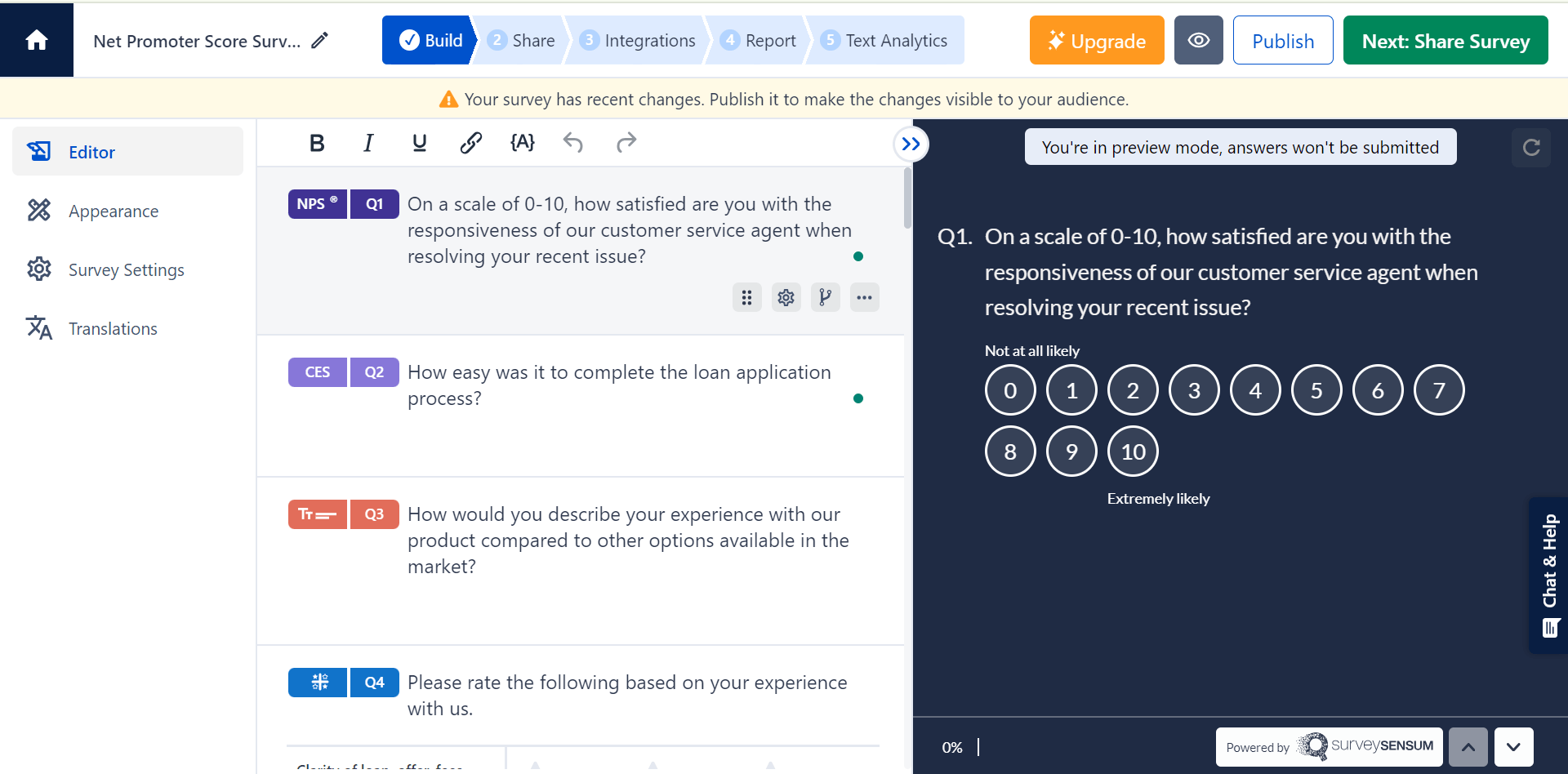
Once you share the surveys, you will start getting real-time feedback in your dashboard.

And not just that!
The Text Analysis will analyze all the feedback and will give you top trends for you to take action on.

→ Seek out the best CSAT tools to harness invaluable insights and enhance your customer satisfaction levels!
Employ the best features provided by SurveySensum to enhance your CX timely and effectively today!
So far, so good.
But would you be interested in knowing the best practices to include in your CSAT survey question surveys?
Best Practices for Creating CSAT Survey Question Surveys
Follow these customer satisfaction best practices to ensure your CSAT surveys measure and improve customer satisfaction, increase loyalty, and gain a competitive edge in the market.
Do:
- Begin with an overall company rating question: Starting with this question provides valuable initial insights and enables benchmarking against industry and internal standards over time.
- Include open-text feedback options: Allowing respondents to provide open-ended feedback helps capture detailed experiences and may reveal unexpected insights.
- Optimize for mobile devices: Given the prevalence of mobile survey completion, ensure your survey is mobile-friendly to maintain high participation rates.
Don’t:
- Use double-barrel questions: Avoid questions that address multiple issues but only allow for one response, as they can confuse respondents and lead to inaccurate data.
- Keep the survey concise: Limit the number of questions, aiming for a CSAT survey of fewer than 10 questions to maximize completion rates.
- Avoid internal or industry jargon: Use language that is clear and easily understandable to ensure respondents can answer each question confidently without confusion.
These practices will enhance your customer satisfaction strategy and take it to the next level!
When To Use Which Survey – NPS, CES, CSAT
NPS, CES, and CSAT surveys each serve distinct purposes in understanding and improving CX. Use NPS to gauge customer loyalty and advocacy to assess overall brand perception. CES is ideal for measuring the ease of doing business with your company, pinpointing areas of friction for targeted improvements. CSAT surveys are best used to assess satisfaction levels after specific interactions, providing insights into customer sentiment and guiding actions for enhancing satisfaction.
→ Read more about when to send which survey with CSAT vs NPS vs CES!
Conclusion
So there you have it, folks! Customer satisfaction surveys are a powerful tool for improving customer satisfaction and increasing revenue, but it’s essential to ask the right questions at the right time.
To get the most out of your surveys, make sure to map out the customer journey and ask relevant questions to gain valuable insights into your customers’ experiences. This can help you identify areas for improvement and enhance the overall customer experience.
Another important factor to consider is survey fatigue. You don’t want to overwhelm your customers with too many surveys, as this can lead to low response rates and inaccurate results. That’s why it’s crucial to use a reliable tool like SurveySensum.
If you’re looking for a hassle-free way to create and launch CSAT surveys, SurveySensum is a great option. It’s easy to use and comes with powerful features that help you gather valuable customer feedback and improve your business.
Enhance Your CSAT Program and Drive Business Growth with SurveySensum!
FAQs
Here are some best CSAT questions examples:
- Overall Satisfaction:
“How satisfied are you with [company/product/service]?”
“On a scale of 1 to 10, how would you rate your overall satisfaction with [company/product/service]?”
- Problem Resolution:
“Did our team resolve your issue satisfactorily?”
“How satisfied are you with the speed and effectiveness of our problem-resolution process?”
- Customer Service Experience:
“How satisfied were you with the responsiveness of our customer service?”
“Did our team meet your expectations in terms of addressing your needs?”
- Ease of Doing Business:
“How easy was it to complete your purchase/use our service?”
“Did you encounter any difficulties during your interaction with us?”
- Product/Service Feedback:
“What do you like most about our product/service?”
“What improvements would you suggest for our product/service?”
- Open-Ended Questions:
“Is there anything else you would like to share about your experience with us?”
“Do you have any additional feedback or comments?”
Here are five customer satisfaction survey questions you can use to gather valuable feedback:
- Overall Satisfaction:
“On a scale of 1 to 10, how satisfied are you with [company/product/service]?”
- Likelihood to Recommend:
“How likely are you to recommend [company/product/service] to a friend or colleague?”
- Problem Resolution:
“Did our team resolve your issue satisfactorily?”
- Customer Service Experience:
“How satisfied were you with the responsiveness of our customer service?”
- Open-Ended Question:
“Is there anything else you would like to share about your experience with us?”
This is, therefore, an example of csat questions to ask your customers.
A customer satisfaction survey is a tool used by businesses to gather feedback from customers regarding their experiences with products, services, or overall interactions with the company. These surveys typically include questions about satisfaction levels, preferences, opinions, and suggestions for improvement.
Here are some CSAT sample questions :
Asking if a customer is satisfied can be done straightforwardly and clearly to encourage honest feedback. Here are a few ways to ask if a customer is satisfied:
- Direct Question:
“How satisfied are you with your experience with [Company Name]?”
- Rating Scale:
“On a scale of 1 to 10, how satisfied are you with [Company Name]?”Optimize your customer satisfaction surveys with SurveySensum’s attractive templates and CSAT questions!













